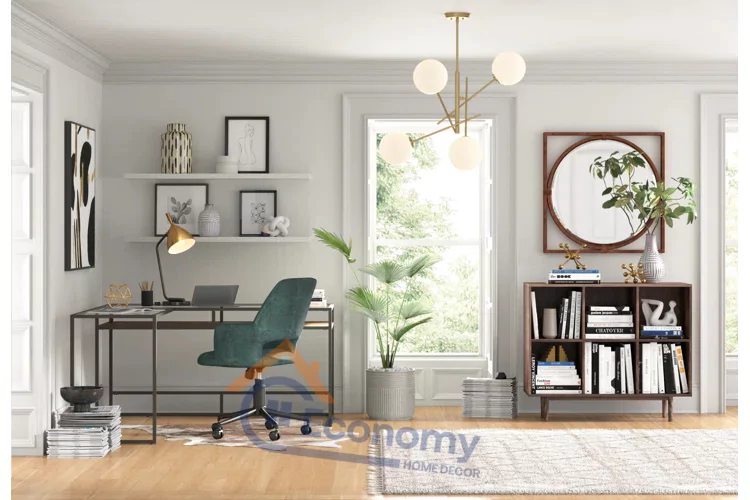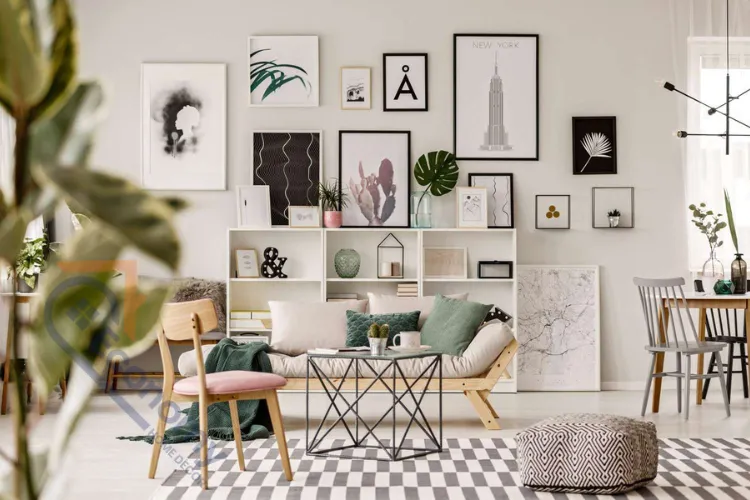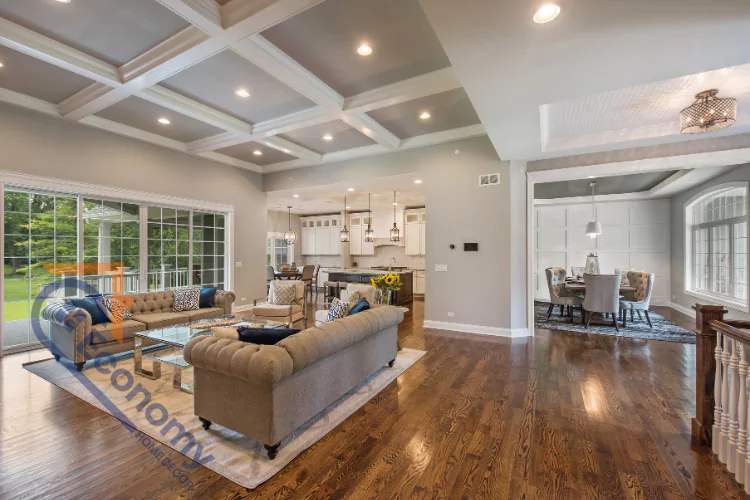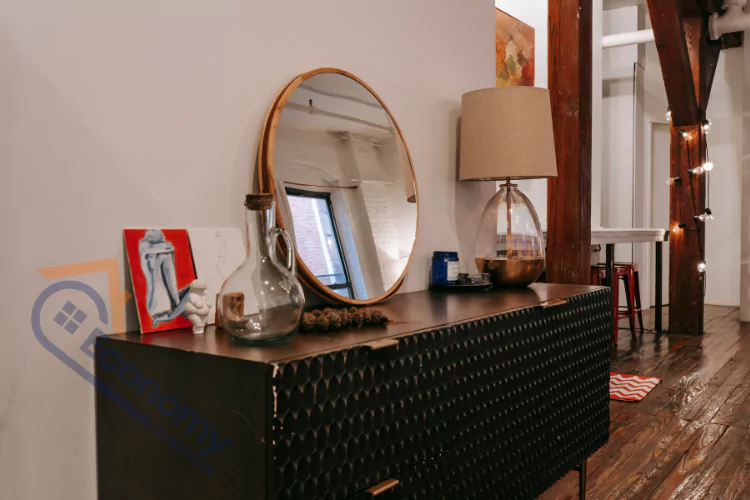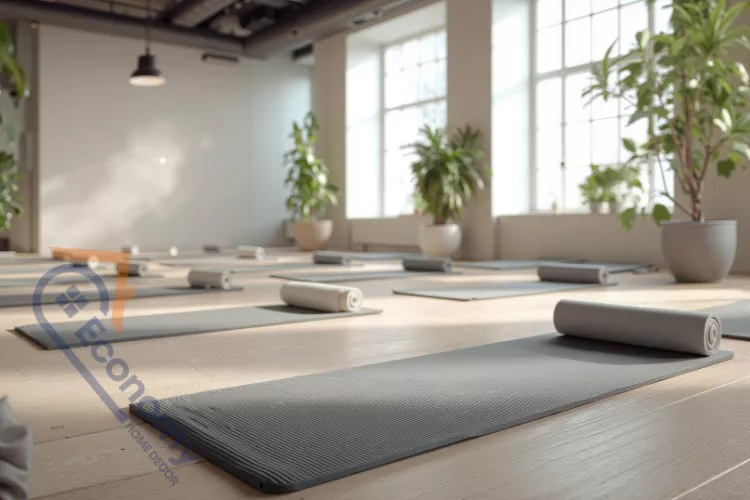Working from home has become the new normal for millions of Americans, making it essential to create a workspace that’s both functional and inspiring. Whether you’re setting up your first home office or looking to refresh your existing space, the right home office decor ideas can transform any room into a premium workspace that boosts productivity and reflects your personal style.
Creating a well-designed home office isn’t just about aesthetics – it’s about crafting an environment that motivates you to do your best work. From choosing the perfect color scheme to selecting furniture that combines comfort with functionality, every decision plays a crucial role in your daily work experience. Let’s explore comprehensive home office decorating ideas that will help you build the workspace of your dreams.
Key Takeaways
- A well-designed home office significantly impacts productivity and job satisfaction
- Color psychology plays a crucial role in creating the right work atmosphere
- Proper lighting combines natural and artificial sources for optimal functionality
- Storage solutions should be both practical and aesthetically pleasing
- Personal touches make your workspace uniquely yours while maintaining professionalism
- Small spaces can be transformed into highly functional offices with smart design choices
- Technology integration should be seamless and organized
- Regular updates and seasonal changes keep your workspace fresh and inspiring
Planning Your Premium Home Office Design
Before diving into specific interior decorating ideas for home office spaces, it’s crucial to establish a solid foundation for your design project. Start by assessing your available space, whether it’s a dedicated room, a corner of your bedroom, or a shared living area. Consider your work habits, the type of tasks you perform daily, and how much time you spend in your office.
Think about your budget and prioritize elements that will have the biggest impact on your daily experience. A comfortable chair might be more important than expensive artwork, while good lighting could trump decorative accessories. Create a wishlist of must-haves versus nice-to-haves, and plan your design in phases if needed.
Consider the existing architecture and natural features of your space. Work with elements like windows, built-in shelving, or interesting wall angles rather than fighting against them. This approach will create a more harmonious and cost-effective design that feels intentional rather than forced.
Assessing Your Space and Needs
Every successful home office starts with honest space assessment and needs analysis. Measure your available area carefully and note any limitations like low ceilings, limited electrical outlets, or awkward layouts. Understanding these constraints upfront will help you make smarter design decisions and avoid costly mistakes.
Consider your work style and daily routines. Do you need space for video calls, requiring a professional background? Are you someone who spreads papers across surfaces, needing ample desk space? Do you prefer a minimalist environment or does visual stimulation help your creativity? These personal preferences should guide your decorating small home office ideas.
Choosing the Perfect Color Scheme
Color psychology plays a fundamental role in creating a productive workspace atmosphere. The colors you choose for your small home office decor ideas can either energize your mind or promote calm focus, depending on your work style and preferences. Understanding how different colors affect mood and productivity will help you make informed decisions about your office palette.
Blue tones are excellent for promoting focus and mental clarity, making them ideal for analytical work. Green creates a sense of balance and reduces eye strain, perfect for long computer sessions. Warm neutrals like beige and soft gray provide a timeless backdrop that won’t become distracting over time. Bold accent colors can add personality and energy when used strategically in small doses.
Consider the natural light in your space when selecting colors. Rooms with abundant natural light can handle darker or more saturated colors, while spaces with limited light benefit from lighter, more reflective hues. Remember that paint is one of the most cost-effective ways to transform any space, so don’t be afraid to experiment with color.
Using Color Psychology for Productivity
Different colors trigger various psychological responses that can either enhance or hinder your work performance. Red stimulates energy and urgency but can become overwhelming in large quantities. Yellow promotes creativity and optimism but may cause anxiety if overused. Purple encourages luxury and creativity, making it perfect for design-focused professionals.
When implementing decorating a home office ideas, consider creating a color story that flows throughout your space. Use a dominant neutral color for major elements like walls and large furniture pieces, then add personality with accent colors in artwork, accessories, and textiles. This approach creates visual cohesion while allowing flexibility for future changes.
Essential Furniture Selection
The foundation of any premium home office lies in selecting furniture that combines comfort, functionality, and style. Your desk and chair are the most critical pieces, as they directly impact your daily comfort and productivity. Invest in quality pieces that will withstand daily use while supporting your physical health and work efficiency.
Consider furniture with multiple functions to maximize your space efficiency. A desk with built-in storage reduces clutter while maintaining clean lines. A bookshelf that doubles as a room divider can create privacy in shared spaces. Ottoman storage provides seating for guests while hiding office supplies.
Think about scale and proportion when selecting furniture for your office decor ideas for home. Oversized pieces can make small spaces feel cramped, while tiny furniture can look lost in larger rooms. Measure carefully and consider the visual weight of each piece in relation to your overall space.
Desk Options for Every Space
Your desk choice significantly impacts both functionality and aesthetics in your home office. Traditional rectangular desks work well in dedicated office rooms, while L-shaped desks maximize corner spaces efficiently. Standing desk options promote health and can be adjusted throughout the day for comfort.
For decorating home office ideas in small spaces, consider wall-mounted floating desks that don’t take up floor space. Console tables can double as desks in living areas, maintaining the room’s primary function while providing workspace. Glass desks create visual lightness in small rooms, while solid wood desks add warmth and gravitas to larger spaces.
Lighting Solutions for Productivity
Proper lighting is essential for both productivity and eye health in your home office. The best lighting combines natural light with layered artificial lighting to create a bright, comfortable environment throughout the day. Poor lighting can cause eye strain, headaches, and decreased focus, making it a crucial element in your home office wall decor ideas.
Natural light should be your primary light source whenever possible. Position your desk perpendicular to windows to minimize glare on computer screens while maximizing natural illumination. If direct natural light isn’t available, full-spectrum bulbs can mimic natural light and help maintain your circadian rhythm.
Create multiple lighting layers including ambient lighting for general illumination, task lighting for focused work, and accent lighting for visual interest. This approach allows you to adjust lighting levels based on the time of day and specific tasks you’re performing.
| Lighting Type | Purpose | Best Options | Placement Tips |
|---|---|---|---|
| Natural Light | Primary illumination | Windows, skylights | Position desk perpendicular to windows |
| Task Lighting | Focused work | Desk lamps, under-cabinet lights | Direct light onto work surface |
| Ambient Lighting | General room lighting | Ceiling fixtures, floor lamps | Evenly distributed throughout space |
| Accent Lighting | Visual interest | Wall sconces, LED strips | Highlight architectural features or artwork |
Natural vs. Artificial Light Balance
Balancing natural and artificial light creates the most comfortable and productive work environment. Natural light provides full-spectrum illumination that’s easy on the eyes and helps maintain natural energy levels throughout the day. However, relying solely on natural light can create problems during cloudy days or evening work sessions.
Supplement natural light with high-quality LED bulbs that offer adjustable color temperature. Cooler light (5000K-6500K) promotes alertness during morning hours, while warmer light (2700K-3000K) creates a more relaxed atmosphere for evening work. Smart bulbs allow you to adjust both brightness and color temperature throughout the day.
Storage and Organization Systems
Effective storage solutions are fundamental to maintaining a premium workspace atmosphere. Clutter not only looks unprofessional but also creates mental distractions that can significantly impact productivity. When developing office decor ideas home plans, prioritize storage that keeps essential items accessible while maintaining visual cleanliness.
Built-in storage offers the most seamless appearance and maximizes space efficiency. Floating shelves create storage without visual weight, while closed cabinets hide clutter completely. Consider your storage needs carefully – do you need space for files, books, supplies, or personal items? Different items require different storage solutions.
Vertical storage maximizes space in small offices. Wall-mounted organizers, pegboards, and tall bookcases draw the eye upward and create the illusion of higher ceilings. Use baskets, boxes, and containers to group similar items together while maintaining a cohesive aesthetic throughout your space.
Stylish Storage Solutions
Storage doesn’t have to be purely functional – it can also serve as decorative elements in your small home office decorating ideas. Attractive baskets can hide supplies while adding texture and warmth to your space. Vintage suitcases can store seasonal items while serving as unique side tables or display surfaces.
Consider open versus closed storage based on your items and work style. Books and attractive office supplies can be displayed on open shelves, while personal papers and less attractive necessities should be hidden in closed storage. Mix both types throughout your space for visual interest and practical functionality.
Wall Decor and Art Selection
Wall decor transforms blank surfaces into inspiring focal points that reflect your personality and professional image. When selecting home office bedroom decorating ideas, choose artwork that motivates and energizes you without becoming distracting during video calls or focused work sessions. The right wall decor can make your space feel more premium and personalized.
Consider the scale of your wall space when selecting artwork. Large, bold pieces work well on expansive walls, while smaller pieces should be grouped for maximum impact. Gallery walls can showcase multiple pieces while creating visual interest, but ensure they don’t become too busy or distracting for your work environment.
Think about the message your wall decor sends during video calls. Professional artwork, motivational quotes, or tasteful family photos create positive impressions, while overly personal or controversial pieces might be better saved for spaces outside your video call background.
Creating Gallery Walls
Gallery walls offer an excellent opportunity to showcase personality while maintaining professionalism in your home office wall decorating ideas. Start with a central anchor piece, then build around it with complementary artwork, photographs, or even floating shelves with decorative objects.
Plan your gallery wall layout on the floor before hanging anything on the wall. This allows you to experiment with arrangements and ensure proper spacing and balance. Maintain consistent spacing between pieces – typically 2-3 inches works well for most arrangements. Consider using matching frames for cohesion or mixing frame styles for more eclectic appeal.
Adding Plants and Natural Elements
Incorporating plants and natural elements into your home office design creates a healthier, more inspiring work environment. Plants improve air quality, reduce stress, and add life to your home office wall decoration ideas. Even if you don’t have a green thumb, there are many low-maintenance options that thrive in office environments.
Natural elements like wood, stone, and natural fibers add warmth and texture to your space while creating a connection to the outdoors. These materials can be incorporated through furniture, decorative accessories, or architectural elements. The biophilic design principle suggests that humans have an innate connection to nature, and incorporating natural elements can improve both mood and productivity.
Consider the lighting conditions in your office when selecting plants. Low-light options like pothos, snake plants, or ZZ plants thrive in typical office conditions. If your space has abundant natural light, you can choose from a wider variety of plants including flowering options that add color and fragrance to your workspace.
Low-Maintenance Plant Options
Selecting the right plants for your ideas for home office decor ensures your green additions thrive without requiring constant attention. Snake plants are virtually indestructible and can survive in low light with minimal watering. Pothos plants grow quickly and can be trained to climb or trail, creating dramatic visual impact with minimal care.
Succulents offer architectural interest and require very little water, making them perfect for busy professionals. Air plants need no soil and only occasional misting, while peace lilies add elegant white blooms and help purify the air. Consider starting with one or two plants and expanding your collection as you gain confidence in plant care.
Technology Integration and Cable Management
Modern home offices require seamless technology integration that supports productivity without creating visual chaos. Cable management is crucial for maintaining a premium appearance while ensuring all your devices function properly. Poor cable management not only looks unprofessional but can also create safety hazards and make it difficult to clean your space.
Plan your technology needs before setting up your office layout. Consider how many devices you’ll be using, where outlets are located, and how cables will be routed. Power strips with surge protection keep your equipment safe while reducing outlet needs. Wireless technology can minimize cable requirements, but some connections still require physical cables for optimal performance.
Use cable management solutions like cord organizers, cable trays, or conduits to keep wires neat and organized. Label cables for easy identification during troubleshooting or reorganization. Consider furniture with built-in cable management features, or retrofit existing pieces with grommets or cable clips.
Creating a Tech-Friendly Workspace
Your decorating ideas for home office should accommodate current technology while remaining flexible for future upgrades. Ensure adequate ventilation around electronic equipment to prevent overheating. Position routers and modems in central locations for optimal wireless coverage throughout your home.
Consider investing in a docking station that allows you to connect multiple devices with a single cable. This solution is particularly useful if you switch between laptop and desktop setups or frequently connect external monitors, keyboards, and mice. USB hubs expand connection options while keeping cables organized in one location.
Personalizing Your Professional Space
Adding personal touches to your home office creates a space that truly feels like yours while maintaining professional appearance. The key is striking the right balance between personality and professionalism, especially if you take video calls from your office. Personal elements should inspire and motivate you without becoming distracting or inappropriate for professional interactions.
Family photos, travel mementos, and meaningful artwork can all find appropriate places in your home office decoration ideas. Consider the placement of personal items carefully – items within your video call background should be universally appropriate, while more personal items can be placed outside the camera’s view.
Create inspiration boards or mood boards that motivate you and keep you focused on your goals. These can include images of dream destinations, career aspirations, or simply beautiful imagery that makes you happy. Change these regularly to keep your space feeling fresh and inspiring.
Professional vs. Personal Balance
Finding the right balance between professional and personal elements in your home office desk decor ideas requires thoughtful consideration of how you use your space. If you frequently take video calls with clients or colleagues, maintain a more conservative approach to personal items within the camera’s view.
Consider creating zones within your office – a more professional area for video calls and client work, and a more personal area for creative tasks or private work. This approach allows you to enjoy personal elements while maintaining professional credibility when needed.
Small Space Solutions
Creating a premium workspace in a small area requires creative thinking and smart design choices. Wall decor ideas for home office spaces in small areas should focus on vertical elements that draw the eye upward, creating the illusion of more space. Every element should serve multiple purposes whenever possible to maximize functionality without sacrificing style.
Multifunctional furniture is essential in small spaces. Ottoman storage provides seating and organization. Nesting tables can be separated when needed or stacked to save space. Wall-mounted desks fold away when not in use, allowing the room to serve multiple purposes throughout the day.
Light colors and reflective surfaces help small spaces feel larger and brighter. Mirrors strategically placed can double the visual space while adding light. Glass furniture pieces maintain sight lines and create visual lightness. Avoid heavy, dark furniture that can make small spaces feel cramped and claustrophobic.
Maximizing Vertical Space
When floor space is limited, think vertically to create storage and visual interest in your decoration ideas for home office. Floor-to-ceiling bookcases draw the eye upward and provide maximum storage in minimal floor space. Wall-mounted floating shelves create storage without taking up any floor area.
Consider hanging organizers, pegboards, or magnetic boards on walls to keep supplies accessible while maintaining clear surfaces. Tall, narrow furniture pieces work better in small spaces than wide, short pieces. Use the space above doorways and windows for additional storage or decorative elements.
Budget-Friendly Decorating Tips
Creating a premium-looking home office doesn’t require a premium budget when you make smart choices and get creative with diy home office decor ideas. Many high-impact changes can be accomplished with minimal investment when you focus on the elements that provide the biggest visual impact for your money.
Paint is one of the most cost-effective ways to transform any space dramatically. A fresh coat of paint can make old furniture look new, create feature walls, or completely change the mood of your office. Consider painting furniture pieces to match your color scheme rather than purchasing new items.
Thrift stores, estate sales, and online marketplaces offer opportunities to find unique pieces at fraction of retail cost. Look for solid wood furniture that can be refinished or painted to match your aesthetic. Vintage accessories often have more character than mass-produced items and cost significantly less.
DIY Projects for Office Enhancement
Simple DIY projects can add custom touches to your home office decor idea while saving money. Create custom artwork by framing fabric samples, wallpaper remnants, or even pages from old books. Build simple floating shelves using basic lumber and brackets for a fraction of the cost of purchasing pre-made options.
Repurpose items from other areas of your home for office use. Mason jars become attractive pencil holders, vintage trays organize desk supplies, and old frames can display inspirational quotes or images. The key is looking at items with fresh eyes and considering how they might serve new purposes in your office space.
Seasonal Updates and Maintenance
Keeping your home office fresh and inspiring requires regular updates and maintenance. Seasonal changes can reinvigorate your workspace and maintain your enthusiasm for your environment. Simple changes like switching out throw pillows, adding seasonal plants, or rotating artwork can make your space feel completely new without major investment.
Spring cleaning should extend to your home office organization systems. Purge files you no longer need, reorganize storage areas, and deep clean all surfaces. This is also an excellent time to assess what’s working in your current setup and what might need adjustment based on how your work has evolved.
Consider your cute home office decor ideas as an evolving project rather than a one-time setup. Your needs, preferences, and work style may change over time, and your office should adapt accordingly. Regular small updates are more manageable and cost-effective than major overhauls.
Refreshing Your Space Regularly
Regular refreshing keeps your workspace inspiring and functional. Monthly mini-updates might include rearranging desk accessories, adding new plants, or switching out artwork. Quarterly assessments can address bigger issues like storage needs, lighting adjustments, or furniture arrangement changes.
Annual deep cleaning and organization sessions ensure your office continues to serve your needs effectively. This is an ideal time to evaluate major purchases, assess whether current systems are working, and plan for any significant changes or upgrades you want to make in the coming year.
Creating Different Work Zones
Even in small spaces, creating distinct zones can improve functionality and mental clarity. Your decorate home office ideas should include areas designated for different types of work activities. A focused work zone with minimal distractions, a creative zone with inspiring elements, and a communication zone optimized for video calls can all coexist within the same space.
Use furniture arrangement, lighting changes, or even simple visual cues to delineate different zones. A comfortable reading chair creates a zone for reviewing documents or brainstorming. A standing desk area encourages movement and can boost energy during afternoon slumps. Even a small side table with coffee supplies creates a mini break zone within your office.
Visual separation doesn’t require physical walls. Different lighting, rug placement, or even paint colors can suggest different areas within the same room. The key is creating mental associations between specific areas and specific types of work activities.
Multipurpose Area Design
When your home office must serve multiple purposes, smart design becomes even more critical. Boho home office decor ideas often work well in multipurpose spaces because the eclectic style can incorporate elements from different functions seamlessly.
Consider furniture that easily transforms or moves to accommodate different uses. Rolling carts can move supplies when the space needs to function as a guest room. Folding screens can provide temporary privacy during calls when the office is part of a living area. The goal is creating flexibility while maintaining the professional appearance you need for work activities.
Conclusion
Creating a premium home office workspace is an investment in your productivity, well-being, and professional success. The black and white home office decorating ideas, colorful creative spaces, or minimalist professional environments we’ve explored all share common elements: thoughtful planning, quality basics, and personal touches that make the space uniquely yours.
Remember that your home office is a reflection of your professional image and personal style. Whether you’re working with a dedicated room or carving out space in a shared area, the principles of good design – proper lighting, comfortable furniture, effective storage, and inspiring decor – remain the same. The key is adapting these principles to your specific space, needs, and budget.
Your workspace should evolve with your career and changing needs. Start with the basics and build your ideal office over time. Small improvements and updates can keep your space fresh and inspiring while major changes can be planned and budgeted for the future. The goal is creating an environment that you love spending time in and that supports your best work every day.
Frequently Asked Questions
Q: How much should I budget for a home office makeover? A: Budget ranges vary widely depending on your needs and current setup. Basic updates like paint, organization, and accessories can cost $200-500, while complete makeovers with new furniture and technology can range from $1,000-5,000 or more. Start with high-impact, low-cost changes and build over time.
Q: What’s the most important element in a home office? A: A comfortable, ergonomic chair and proper desk height are the most critical elements since they directly impact your health and productivity. Good lighting comes second, followed by adequate storage and organization systems.
Q: How can I create privacy in a shared space? A: Room dividers, bookcases, curtains, or even tall plants can create visual separation. Noise-canceling headphones help with audio privacy, while strategic furniture placement can create a sense of enclosure within larger spaces.
Q: What plants work best in home offices? A: Low-maintenance options like snake plants, pothos, ZZ plants, and peace lilies thrive in typical office conditions. Succulents are also excellent choices for sunny spaces, while air plants work well in areas with limited surface space.
Q: How often should I update my home office decor? A: Small seasonal updates keep spaces fresh, while major changes might happen annually or when your work needs change significantly. The key is maintaining a space that continues to inspire and support your productivity.

